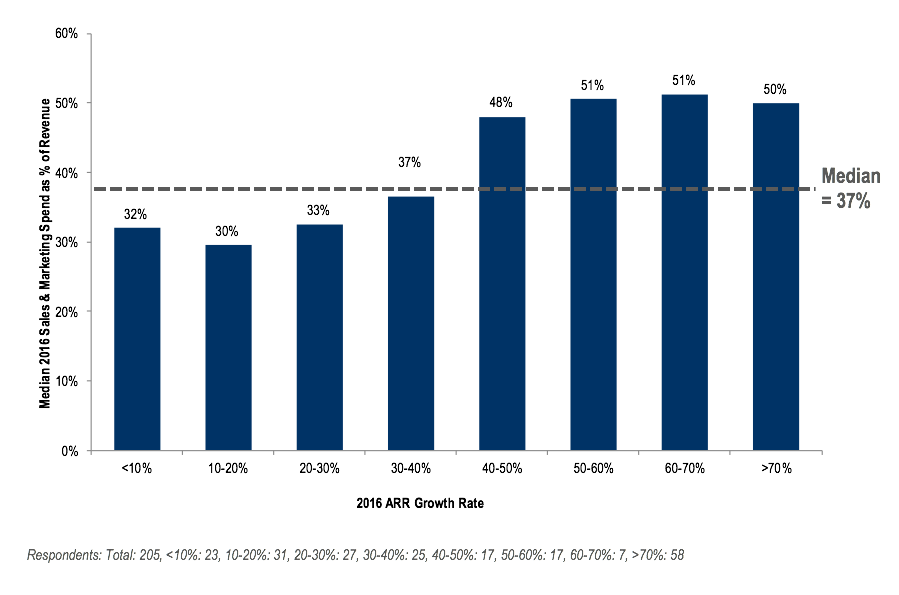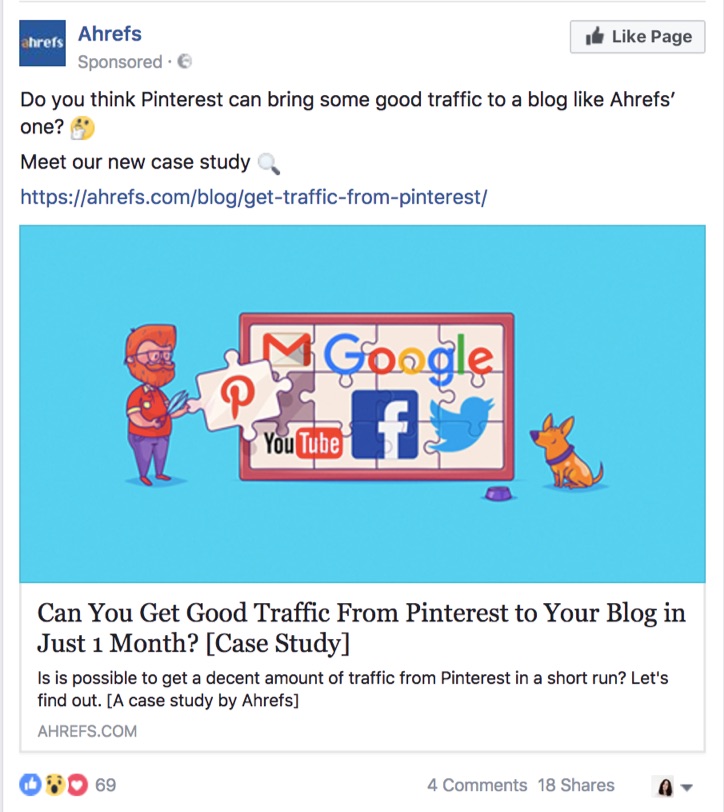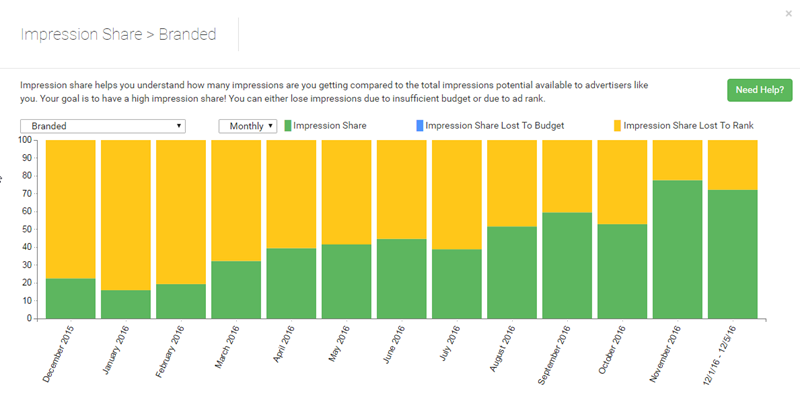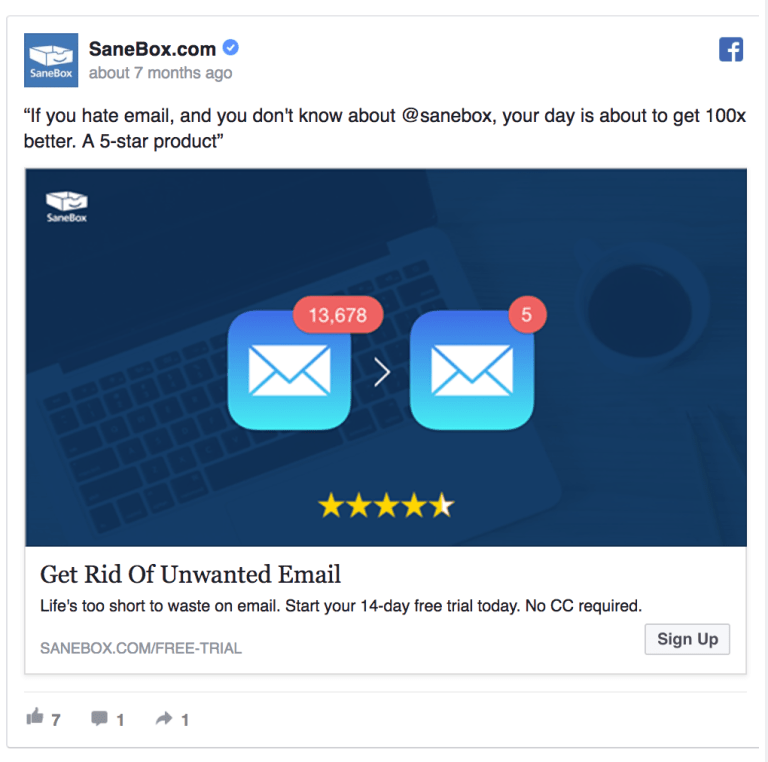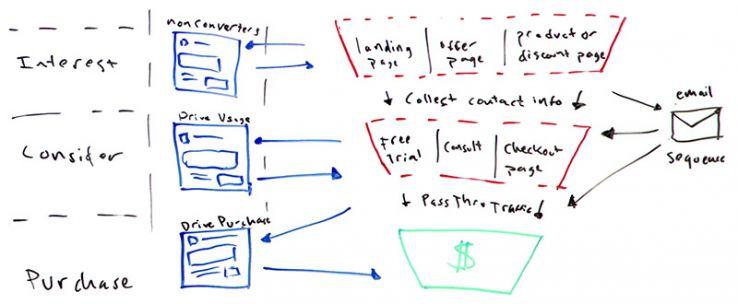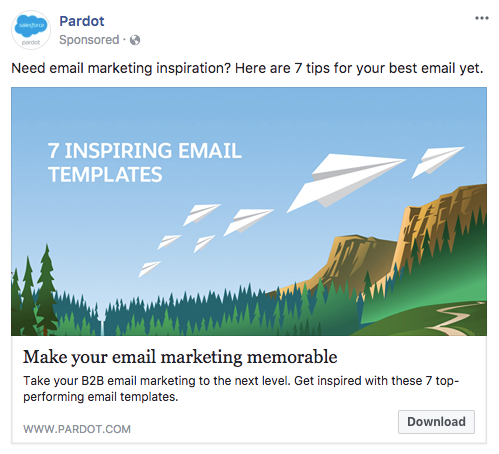Ad media buying for SaaS products can feel like a rabbit hole of complexity.
Best practices, capabilities and tactics will change depending on what you’re trying to accomplish, what platform you’re on and whose advice you take.
But once you do understand that layer, there’s even more differences and challenges depending on the audience you’re trying to appeal to, and other factors specific to your situation.
As daunting as it might be to master, digital advertising is an unavoidable growth channel for most SaaS companies. So the sooner you get started figuring it all out, the better. Not that experimenting necessarily leads to success, but it’s definitely a prerequisite.
The era of social media as an unpaid marketing free-for-all is ending, with organic reach continuously declining. And all the while, competition with other SaaS companies for search rankings and audience attention is becoming fiercer. Two years ago, Cisco tallied over 150,000 distinct SaaS products in the wild, representing 30 times more volume than just two years prior. Now more than ever, paid acquisition is a key piece of the puzzle.
Most marketers are taking this challenge to heart. According to the latest Gartner CMO Spend Survey, 67% of CMOs plan to increase their spending in digital ads this year. And the latest annual Private SaaS Company Survey found once again that spending a higher percentage of revenues on sales and marketing correlates with faster growth.
If your product is among the SaaS companies emphasizing advertising this year, I’m sure you’re feeling pressure to ensure your budget isn’t going to waste on simple mistakes.
Here are eight tips to make sure you avoid some of the most common SaaS ad buying pitfalls.
1. Taking an ‘Everything, Everywhere’ Approach
The first and easiest mistake to make is thinking of digital advertising as one large platform that you can take a “one size fits all” approach to. Plenty of marketers simply try to run the same campaign, the same way, on multiple channels and end up shocked that it’s not working.
Context matters more than you think. It’s true in most situations, but especially in the case of SaaS products.
When you’re advertising a technology product, the pain point that your product aims to solve should ideally be at least somewhat aligned with the activities being performed when your audience sees your ads. For example, targeting mobile users with ads for your web-only app might not be the best idea. The overall experience just wouldn’t make sense.
Instead, adjust your campaigns for each platform so they take viewers on a natural and friction-free journey of discovery. For a web tool, that might mean promoting pieces of content, instead of your product itself, and nurturing and converting via a different channel later.
For example, Ahrefs includes content offers that can be consumed anywhere as part of its advertising strategy on Facebook, whereas they might offer their product directly on AdWords or display campaigns.
2. Assuming Only Humans Click
It’s easy to look around your own environment and see the positive impression tech can make on your target customers, but don’t forget how often it’s used for nefarious purposes, like click fraud used to tank advertising campaigns.
Pixalate’s data found that desktop click fraud rose to 25% and is on the rise in all forms, meaning the metrics on your campaigns might not represent its true reach and impact. In addition to the obvious drain on resources and ad spend that click fraud represents, it can also skew your metrics and interpretation of your overall campaigns and make your digital marketing strategy harder to figure out in general.
Be sure to protect your marketing budget and campaign itself by being proactive against click fraud. Click-fraud prevention tools like ClickCease can detect and block fraudulent clicks on your Google and Bing ads before they deplete your budget. By using sophisticated AI, the engine picks up on suspicious behavior patterns, auto-bans offending IPs and even submits refund requests to the ad networks on your behalf.
3. Underestimating Brand Awareness
In competitive SaaS landscapes, measurable growth in sales conversions is often favored over brand awareness, which is trickier from an attribution standpoint. However, given the importance of familiarity in such a competitive landscape, building awareness is underrated.
A user likely won’t sign up for your tool the first time they hear about it. Instead, advertising and retargeting can “plant the seed” and build brand awareness strategically. This is the power of the “familiarity bias.” We’re more likely to do business with brands we recognize than those we don’t.
For example, Delighted uses simple display ads with noticeable imagery that’s in line with their app’s use case itself.
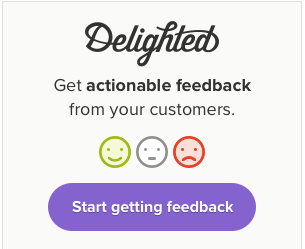
Use brand awareness campaigns to build further relationships and familiarity over time with people getting to know your product. People are still generally loyal to the software they use, so you’ll need a long-term strategy to alter that relationship and win them over.
Take your time wowing them with awareness-focused content around educational topics. These people are still too high up in the funnel to respond well to sales pitch messaging, especially if they’re currently happy using your competitor’s product. But even if they have what’s called “inertia loyalty” to your competitor, meaning that they’re sticking around simply because they don’t want to deal with the nuisance of switching, you’re still going to need to win them over before you can effectively pitch.
4. Ignoring Audience Intent Signals
The importance of context matters in more ways than one.
By ignoring the context and intent around which a user might be looking for a tool, you might end up paying to have the wrong messaging served up to the wrong audience members. This may lead to poor conversions right away, or you could make the longer-term mistake of winning customers who won’t stick around long-term.
For example, AdWords campaigns targeting anyone searching for free software can be a mistake that’s costly in the long run. Many SaaS experts believe that someone prioritizing a free price over benefits or features likely won’t be your demographic with the highest lifetime value.
Instead, target users who emit signals indicating they’re likely to become high-value customers. For example, Asana targets searchers of team collaboration software, but you likely won’t see them going as aggressively after those looking for free to-do list tools. Intent signals come in many shapes and forms, ranging from spending a lot of time looking at sales-oriented resources on your website to using keywords in Google searches that speak to the types of considerations people make at the bottom of the funnel.
Hubspot’s free CRM is a good option to automatically log all interactions across channels and touchpoints, to track and nurture leads and manage your sales pipeline. This allows you to take sophisticated intent modeling into account when automating follow up and scoring leads to determine sales-readiness.
5. Writing off Branded Keywords
“Why bid on the one term we can rank for organically?” is an understandable sentiment, but it’s also one that will hold you back.
Search terms using your brand name often signal high intent and readiness to close – a desirable audience you want to make sure you’re in front of. Don’t rely on an organic listing alone.
For one, with “brand plus” terms (think: “Kissmetrics alternatives”), you may not be able to rank organically but want to capitalize on the name recognition. Plus, combining organic and paid listings can result in more clicks overall, driving more immediate results than SEO alone, and often improving your AdWords quality score. The more your brand dominates a given search result screen, the more likely you are to yield those clicks, one way or another.
To easily manage multiple campaigns combining different types of keyword targeting, a management tool like WordStream will come in handy, especially in analyzing which ones are worth your budget. You can easily use it to segment ad impact, regardless of your campaign structures, to reveal the value that your bids on branded terms are delivering.
Just make sure you don’t get swept into a bidding war for your own brand name with a particularly brash competitor who’s trying to poach your prospects. Keep your acquisition cost thresholds in mind when bidding on your own brand name, just like you do when bidding for any other keyword.
6. Overlooking UGC Opportunities
User-generated content (UGC) is among the most powerful wellsprings of persuasion known to mankind. Audience members find content posted by their peers to be far more relatable and trustworthy than content produced by professional marketers.
Research from Reevoo found that approximately one-third of respondents rate brand content as “very influential,” whereas nearly two-thirds feel that way about UGC.
Much of the power of UGC comes down to issues of trust. This is especially true when it comes to virtual products promoted in virtual spaces, where many buyers feel vulnerable. With so many scammers, hackers and trolls around, a little bit of social proof can go a long way. Using genuine product reviews in your ad creative helps people to feel safe.
In this ad for SaneBox, an emotionally charged excerpt from a glowing customer review is rendered even more impactful thanks to the additional elements in the ad. A sparse, bold visual easily conveys the main benefit of the SaaS solution. Bright stars make the UGC rating pop out, and mentioning a free trial further helps alleviate people’s worries that about risk.
7. Not Building Nurture Funnels
In case you haven’t noticed a theme with these mistakes, marketers often aren’t thinking long-term enough. While the nature of SaaS does allow for a shorter sales cycle, you still won’t convert tons of customers in one touch alone.
Instead, build out ad funnels to nurture your prospects over time.
Using sequences of connected content and CTAs, you can increase your marketing impact at each stage of the buyer’s funnel and guide audiences over time from one step to the next.
For example, Ryan Stewart has explained how you can use content to capture cold lookalike audiences on Facebook, and then use offers to retarget and take them to consideration, before showing testimonials and case studies and finally a hard sell.
Ads guide users through every stage, rather than just dropping them into the sales funnel and letting them fall out at any time. People who heed the calls-to-action in each ad group merit to see the next round of ads.
8. Overlooking Current Customers
Why pay money to advertise your product to its existing users? Because SaaS’s success is in customer retention. You need to be working to keep your customers at all times, and it’s an important enough priority to devote ad spend to.
There are multiple ways advertising can fit into your customer retention strategy, from content and onboarding communication, to promoting new product features and announcements, to sharing new case studies and uses of your tool to unengaged users. The objective here is to keep people associating your product and brand with their most empowered selves.
For example, Pardot’s inspirational content can give current users ideas for improving their own campaigns and getting more out of the software.
When you build out an ad-driven nurturing funnel, be sure to extend your strategy to include retaining current customers.
Make Your Spend Matter
With so much changing in the online marketing space right now and increasing competition from new apps every month, a carefully planned paid media strategy can give you a head start on companies still not giving it the attention it’s worth.
While they’re obsessing over ways to get their organic Facebook reach back or connect with SaaS users on Snapchat, you’ll be reaching users with high intent on Google searches and through Facebook retargeting.
And by avoiding the above mistakes, your competitive advantage only becomes greater.
About the Author: Nadav is a veteran online marketer and the Founder & CEO of InboundJunction, an Israel-based content marketing company. Nadav helps well-known brands in boosting their online visibility through PR, SEO and Social Media.
from The Kissmetrics Marketing Blog https://ift.tt/2Gx9UXr
via IFTTT
